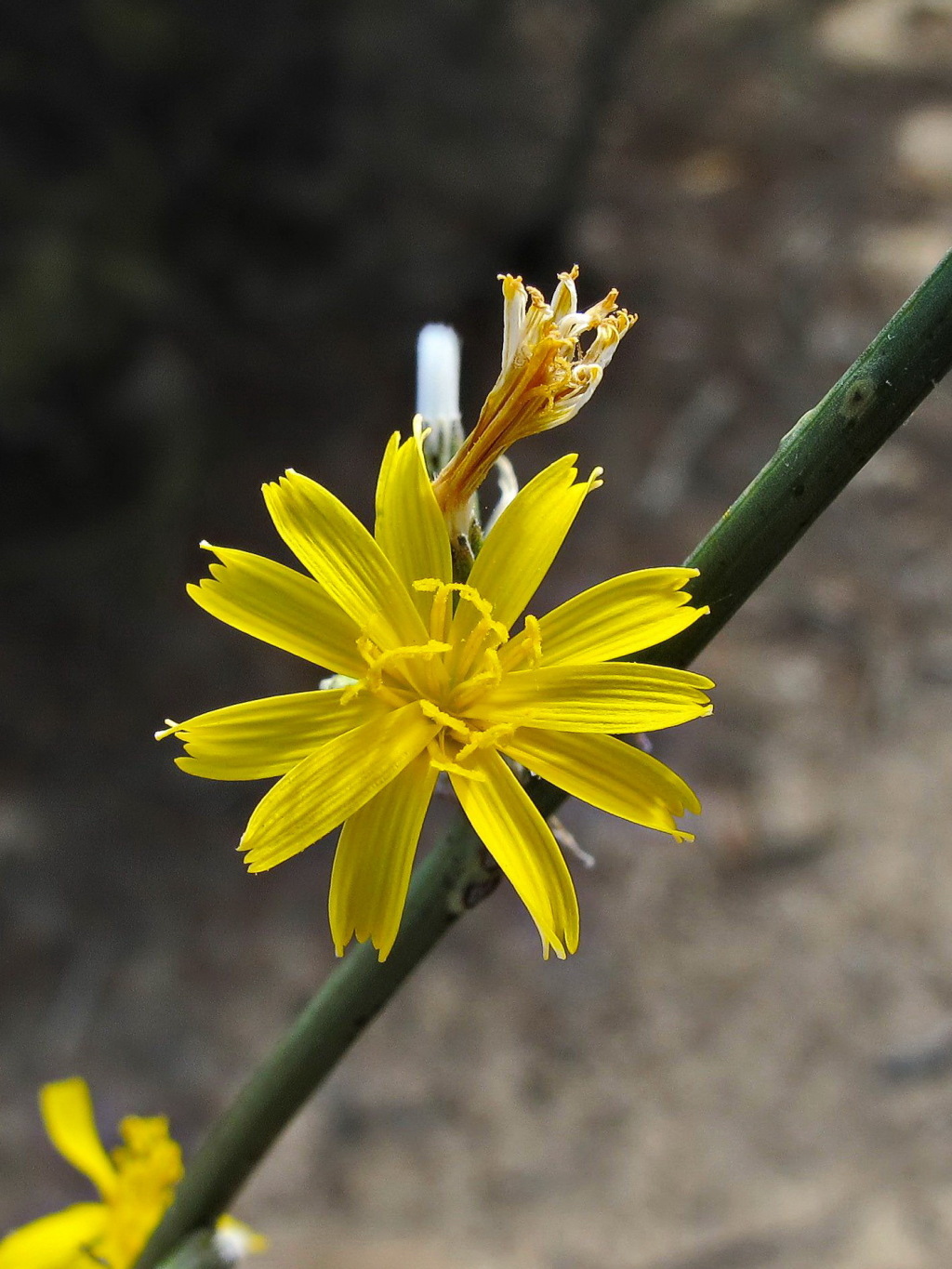Chondrilla juncea
L. Skeleton WeedUsually perennial, to 1.3 m high; stems erect, bristly at base, glabrescent above. Basal leaves short-lived, petiolate, oblanceolate, 4–20 cm long, 1–5 cm wide, runcinate, apex obtuse or rounded, virtually glabrous; cauline leaves few, sessile, linear to lanceolate, to c. 10 cm long but mostly small and bract-like. Capitula 1–3 in axils of reduced leaves; involucre 9–13 mm long; inner bracts 7–9, linear-lanceolate, glabrous to tomentose, with prominent midrib and dark apex. Florets 9–15, yellow; ligule 7–10 mm long. Cypselas 8–10 mm long (including 4–5 mm beak), whitish to dark brown; pappus 6–7 mm long. Flowers late spring–autumn.
LoM, MuM, Wim, GleP, VVP, VRiv, MSB, RobP, MuF, GipP, Gold, CVU, GGr, DunT, NIS, EGU, HSF, HNF, VAlp. Also naturalised WA, SA, Qld, NSW, ACT, Tas. Native to Europe and western Asia. Common mainly across drier inland areas of Victoria where a serious and declared noxious weed of cereal crops, roadsides and other disturbed sites.
Jeanes, J.A. (1999). Asteraceae. In: Walsh, N.G.; Entwisle, T.J., Flora of Victoria Vol. 4, Cornaceae to Asteraceae, pp. 652–666. Inkata Press, Melbourne.
 Spinning
Spinning




